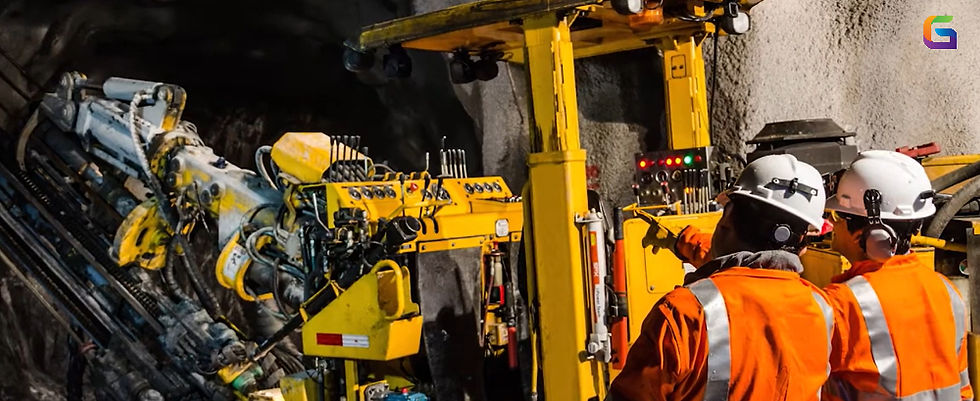NDVI Analysis in Precision Agriculture: Benefits & Techniques
- GeoWGS84

- Jun 20
- 3 min read
Updated: Jun 23
In the fast-changing field of smart farming, the Normalized Difference Vegetation Index (NDVI) analysis plays a crucial role in precision agriculture. By utilizing satellite and drone-based remote sensing, NDVI provides high-resolution, data-driven insights into crop health, vegetation vigor, and variability within fields. This blog will explore the fundamental principles, technical methods, and practical benefits of using NDVI in precision agriculture.
What does NDVI mean?
NDVI is a spectral index derived from the visible (red) and near-infrared (NIR) bands of the electromagnetic spectrum. It quantifies vegetation health by exploiting the difference in reflectance characteristics:
NDVI=(NIR−Red)(NIR+Red)\text{NDVI} = \frac{(NIR - Red)}{(NIR + Red)}NDVI=(NIR+Red)(NIR−Red)
Healthy vegetation reflects more NIR and absorbs red light, producing higher NDVI values (closer to +1).
Stressed vegetation, bare soil, or non-vegetated surfaces yield lower or even negative NDVI values.

Data Acquisition Techniques
A variety of remote sensing platforms, each with distinct spatial, spectral, and temporal resolutions, are necessary for precision NDVI analysis:
1. Satellite Imagery
First, Sentinel-2 satellite imagery (10–20 m spatial resolution, 5-day return)
Landsat 8/9 (16-day return, 30m resolution)
PlanetScope (daily visitation, 3–5m resolution)
Outfitted with cameras such as Parrot Sequoia or MicaSense RedEdge
Provides extremely high-resolution data (less than 10 cm), which is perfect for small and midsize farms.
Adaptable deployment at crucial phases of growth
3. Nearby Sensors
Sensors that are portable or installed on tractors (like GreenSeeker)
Data in real time for fertilizer variable-rate application (VRA)
NDVI Preprocessing Techniques
Thorough preprocessing procedures are necessary for high-quality NDVI analysis:
Raw DN measurements are converted to surface reflectance via radiometric correction.
Georeferencing and orthorectification guarantee that images are aligned spatially.
Cloud masking: Fmask or QA bands are used to eliminate cloud, shadow, and haze effects.
Utilizing methods such as Sen2Cor, 6S, or DOS for atmospheric correction
Key Applications in Precision Agriculture
1. Monitoring of Crop Health
An early warning sign of crop stress brought on by disease, pest infestations, water hardship, or nutrient shortages is the NDVI.
Phenological tracking is made possible using time-series NDVI.
Alerts support focused intervention and scouting.
2. Management of Zones
Vegetation variability maps based on NDVI facilitate zone-specific management:
VRF, or variable rate fertilization, minimizes input waste.
Aligning resources with potential productivity through seeding and irrigation optimization
3. Predicting Yield
Crop production may be accurately predicted by machine learning models based on agroclimatic factors and NDVI time series.
Final yield and NDVI during key growth stages (such as booting and blooming) have a substantial correlation.
4. Analysis of Soils and Moisture
Although the NDVI cannot detect soil moisture directly, anomalies in the NDVI may be a sign of drought, waterlogging, or inadequate drainage.
Used with the Normalized Difference Water Index (NDWI) to provide more in-depth information.
Advanced Techniques
a. Analysis of NDVI Time Series
Longitudinal studies can be conducted with the aid of tools such as Google Earth Engine.
Fourier analysis, ARIMA, or Seasonal-Trend decomposition (STL) can be used to find trends and anomalies.
b. Integration of Machine Learning
Based on NDVI and supplementary data, algorithms such as CNNs, Random Forest, and XGBoost may categorize crop conditions.
c. Combining Different Vegetation Indicators
In dense canopies, discrimination is improved by combining NDVI with indices such as NDRE (Red Edge NDVI), GNDVI (Green NDVI), and EVI (Enhanced Vegetation Index).
Advantages of NDVI Use
Cost-effective and non-invasive: It lowers personnel and operating expenses by enabling vegetation monitoring without physical touch.
Extremely scalable: Useful at a variety of spatial dimensions, from small-scale agricultural plots to entire agricultural areas.
Allows for historical and real-time analysis: enables long-term trend analysis and dynamic crop monitoring.
Strong relationship between biomass and chlorophyll content: NDVI measures photosynthetic activity and canopy density, which properly depicts plant vigor.
Modern precision agriculture relies heavily on NDVI analysis because it offers accurate, scalable, and reasonably priced insights regarding field heterogeneity and crop health. Farmers and agronomists can increase productivity, sustainability, and profitability by integrating NDVI with supplementary indices and decision-support systems, as well as by merging machine learning and remote sensing data.
For more information or any questions regarding NDVI Analysis, please don't hesitate to contact us at
Email: info@geowgs84.com
USA (HQ): (720) 702–4849
(A GeoWGS84 Corp Company)




Comments